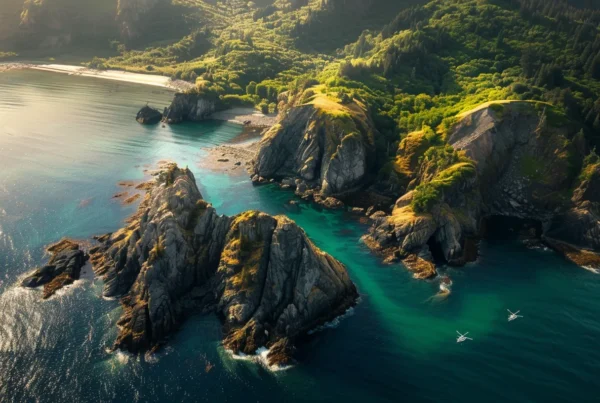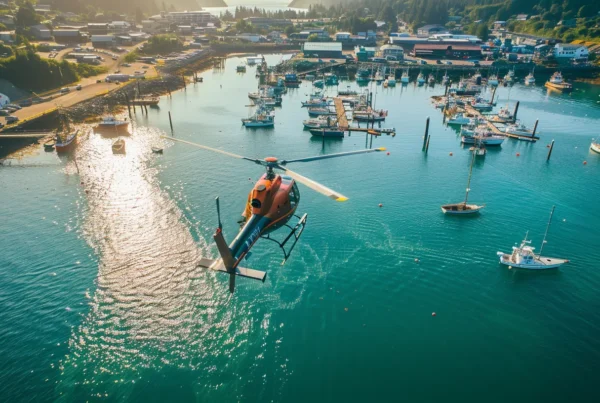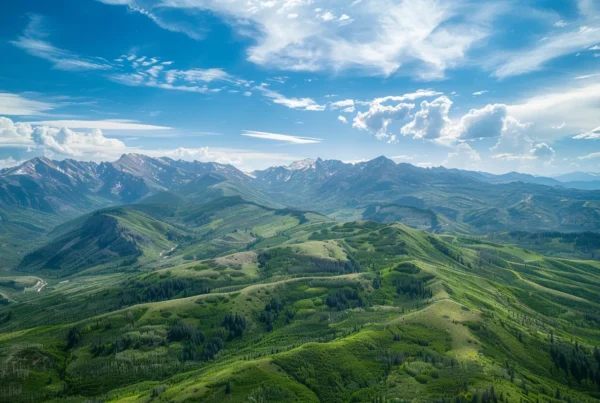Visualizing with Color
Colors influence us differently because they have different wavelengths and frequencies, and these affect different parts of the brain. Color therapy, which uses color to cultivate energy in the body, dates back to the ancient civilizations of Egypt, India and China. Even though Western medicine does not formally recognize color therapy, medical professionals in the West are exploring and using light and color therapies to treat issues like seasonal affective disorder, depression and sleep disorders. With complementary therapies on the rise, use of color and light therapies as adjunctive forms of treatment is becoming more common.
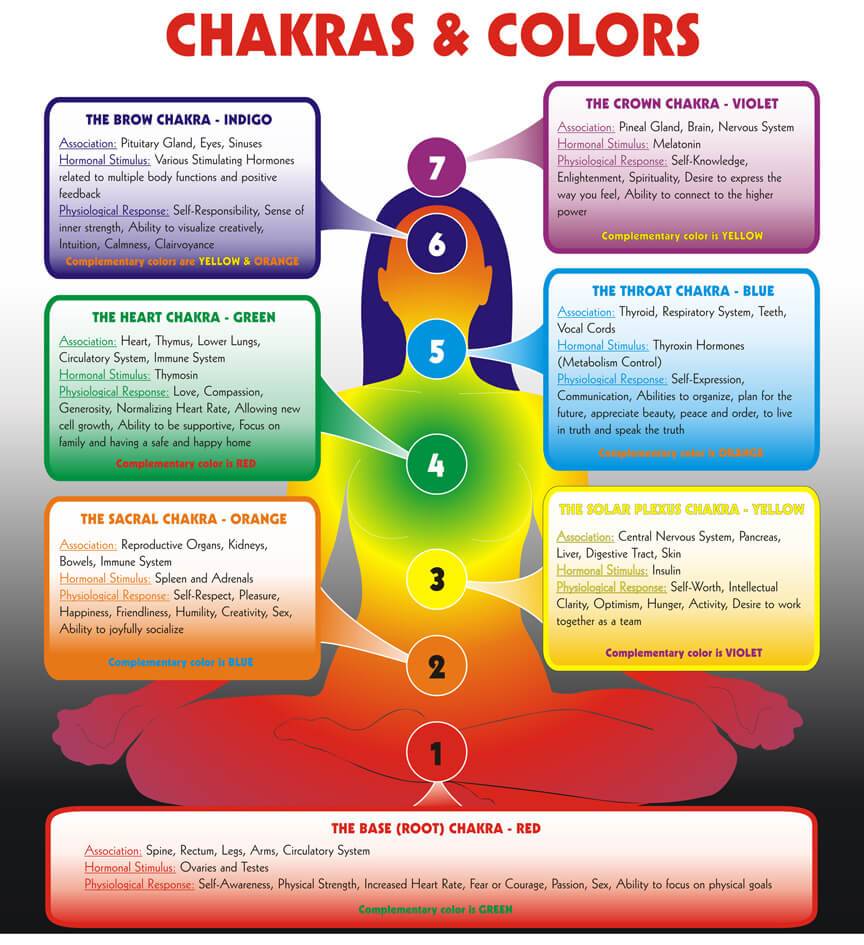 The Chakras
The Chakras
Working with the chakras can be a useful approach to cultivating energy through the use of color (Andrews 1995). Chakra is a Sanskrit word meaning “wheel” or “disk,” and the seven chakras, located along the central axis of the body, represent its seven major energy centers. Recognized by ancient civilizations for thousands of years, these centers correlate to the major nerve ganglia branching out from the spine. The chakras are also said to correlate to levels of consciousness and bodily functions, among other things. And associated with each chakra is a color, based on the concept that the energy vibrating through each center has a different wavelength or quality of light. Color therapy involves working with color in each of the chakras to help balance energy and maintain health and well-being.
Red: The Root Chakra
Red is a symbol of life, strength, courage, passion, love and earth. Warmer than other colors, it is stimulating and can be thought of as a tonic. Bright orange-red is more stimulating than blue-red. Red is said to increase circulation and therefore to raise blood pressure, pulse rate, overall energy and physical temperature.
The color red is associated with the root chakra. This chakra is located at the base of the spine and is related to our connection with the earth. Working with the root chakra and the color red can help ground the body, connecting us to our sense of security, stability and safety.
Orange: The Sacral Chakra
Orange, a combination of red and yellow, is said to be more balancing than red and good for sustaining warmth. It is thought to enhance creativity, vitality and sensuality; stimulate socializing; and create opportunity. Visualizing orange may help alleviate depression; stimulate joy and happiness; and enhance receptivity to pleasure.
The color orange is associated with the sacral chakra, located 2-3 inches below the navel. This chakra is related to the reproductive system, kidneys and adrenals; also with sensuality, sexuality and pleasure. Working with the sacral chakra and the color orange can help us create a healthy balance between body and mind.
Yellow: The Solar Plexus Chakra
Yellow is a bright, empowering color that brings light and growth to our life. It is a symbol of universal love. Yellow helps with self-definition and is a good color to visualize when engaging in physical activities.
The color yellow is associated with the solar plexus chakra, located between the navel and the lower end of the sternum. The solar plexus can be imagined as our own personal sun. The healing properties of this chakra are connected with the pancreas, liver, digestive system and gallbladder and with our ability to absorb nutrition. Working with the solar plexus chakra and the color yellow is said to encourage positive, empowered thinking and link us to our creativity, well-being, pleasure and abundance.
Green: The Heart Chakra
Green is a healing color. Soothing to the body, mind and spirit, it is the most relaxing color for our brain to interpret. Green links us to our love for the earth and to new growth. Combining the coolness of blue with the vibrancy of yellow, green is thought to be the most balancing of all colors. Learning to breathe in the color green may enhance meditation and healing.
The color green is associated with the heart chakra, which is also connected to our lungs and to the thymus gland, which is vitally important to our immune system. Working with the heart chakra and the color green can balance our energy and our nervous system; help our minds focus; connect us to compassion, regeneration and empowerment; and lift our mood.
Blue: The Throat Chakra
Blue represents truth. Cooling to both body and mind, blue provides a spacious, expansive energy that helps with relaxation. Blue symbolizes thoughtful, meaningful love originating from a deep spiritual relationship to oneself. It is also a good healing color for children and an excellent interior home color that can be used to enhance and quiet the mind.
The color blue is associated with the throat chakra, which acts as a channel connecting the heart and the mind. This chakra is associated with the thyroid and the parathyroid glands, which aid in regulating metabolism. Working with the throat chakra and the color blue can help us express ourselves peacefully and truthfully, freeing the voice to be an instrument of healing (in words or song).
Indigo: The Third-Eye Chakra
The royal color indigo signifies spirituality and higher consciousness. You can see this deep color used in churches and temples all over the world. Originating from the deeper hues of blue, indigo has a sedative affect, and too much of it can be depressing.
The color indigo is associated with the third-eye chakra, our seat of intuition and wisdom, located between the eyebrows. Meditation can be an excellent way to develop the third-eye’s ability to “see within.” This chakra is also associated with the pituitary gland, the body’s master gland, and with the pineal gland, which is linked to our cycles of sleeping and waking. Working with the third-eye chakra and the color indigo can help us develop self-esteem, inner peace, discernment, intuition, wisdom, clarity and happiness.
Violet: The Crown Chakra
Violet is the color of transformation. A calming color, it can help slow down nervous energy, creating deep relaxation. Violet can also be intentionally used to raise low self-esteem.
The color violet is associated with the crown chakra, located at the top of the head. This chakra is related to the pineal gland in the brain. This gland is sensitive to light and produces neurohormones like melatonin that help regulate our sleep cycles. The crown chakra also bridges the right and left hemispheres of the brain. Working with the crown chakra and the color violet can stimulate dream activity, clarify our thinking and help us connect to our higher spiritual self.
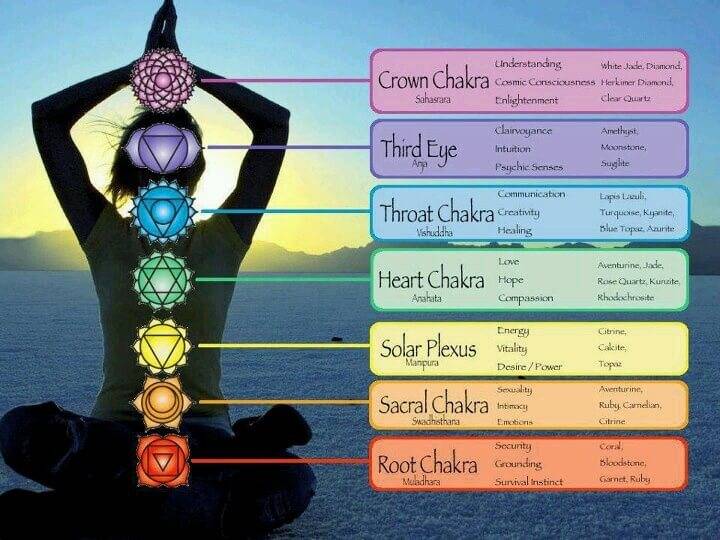 Putting It All Together
Putting It All Together
My own experience tells me that when I am willing, open, present and purposeful, the healing effects of color are sure to lighten my mood, energize or relax my body, and uplift my spirit. It is my hope that your own relationship to the power of color will do the same for you. Remember that balance is key to the effective use of color, just as it is in other areas of life. *
Editor’s Note: The ideas expressed in this article are not intended as medical advice. Readers and their clients are advised to consult a physician or other allied health practitioner regarding treatment of all health problems.

